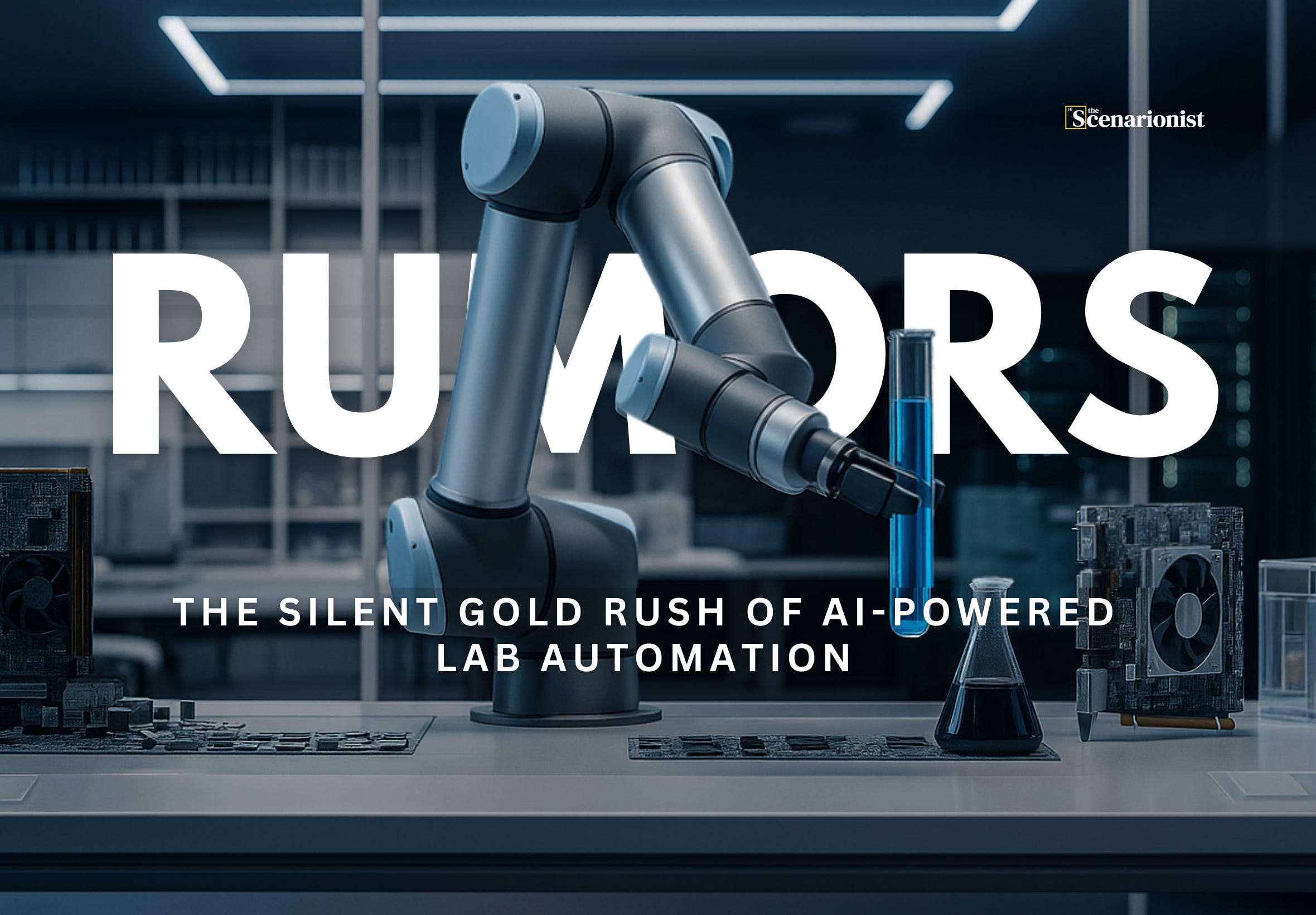The Silent Gold Rush of AI-Powered Lab Automation
Five startups, one rumor: the lab is going fully autonomous.
Introducing Rumors.
Over the past few months, we’ve spent hundreds of hours mapping Deep Tech capital flows—round by round, week by week...And as we went deeper, something interesting started to emerge.
We began noticing patterns.
At first, it was just a passing observation.
As we immersed ourselves in the details—who’s raising, who’s hiring, where bets are being placed—we began to notice patterns.
Startups that, on the surface, seemed unrelated—until you realize they’re quietly building toward the same market.
Repeat signals across different geographies.
Here and there, a startup would pop up in a space still considered too early.
Another would quietly raise a seed round in the same direction.
Maybe a third would land a strategic hire, or publish a preprint.
Alone, these moments seemed like noise.
But as they repeated, they began to cluster.
It felt like watching micro-markets trying to form
A convergence of technology, capital, and talent that still lies beneath the noise or, as often happens in deep tech, is politely dismissed with gentle skepticism.
At first, we called them rumors—half-jokingly, in internal calls.
Now, we’re sharing them with you.
Welcome to Rumors!
✨ Rumors is an intelligence on emerging micro-trends in deep tech where we follow the money, the people, and the patterns across Deep Tech before they get mainstream.
Each edition is an early lens. A pattern-recognition layer for investors, founders, and operators who care about where the frontier is heading—before the narrative hardens.
It’s for Premium Members who want to sharpen their lens, connect dots faster, and be in the room before the memo goes public.
In this edition:
In this first edition of Rumors, we dive into a quiet but accelerating movement reshaping the foundations of scientific research: The rise of AI-powered lab automation.
It’s one of those shifts that didn’t happen all at once.
At first, just a few scattered startups—ambitious, maybe a little too early—were trying to bring AI automation into the wet lab.
But then, the signals started stacking up.
Suddenly, capital was flowing.
Researchers were leaving top-tier institutions to join these teams.
Infrastructure was maturing, and for the first time, it felt like the lab itself was becoming programmable.
We’ve seen enough of these signals converge to believe something real is taking shape.
So in this edition, we map the terrain.
Here’s what we cover:
Why AI-for-labs is happening now
Five startups leading this movement, from Boston to Munich
The capital flowing into the thesis ($250M+ in the last 18 months)
What could go right (or wrong), and how to think about risk
What you’ll find isn’t just a list of companies.
It’s a window into a pattern: five teams, across geographies and business models, each taking a different shot at the same big idea—
That scientific experimentation can be scaled, accelerated, and made vastly more repeatable through software, robotics, and intelligent orchestration.
Some of these companies are building full-stack platforms.
Others are solving the invisible but critical problems—connectivity, standards, throughput—that make automation possible in the first place.
Together, they sketch the early shape of something larger:
A potential transformation in how R&D is done, funded, and imagined.
✨ This is a free teaser.
You’re reading a short preview of Rumors.
The full edition—complete with startup profiles, funding details, market context, and our own reflections on what this might mean for the future of scientific discovery—is available to Premium Members Only.
If you like to catch inflection points while they’re still forming — Upgrade to Premium to read the full edition!
1. Macro Frame: Why Now?
So, Why is this happening now? After all, rudimentary robotics and basic lab software have existed for years. Our exploration surfaced a few key catalysts:






